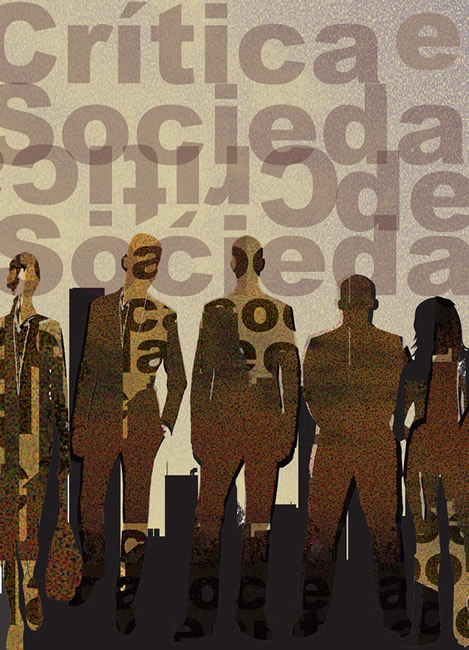O FASCISMO UCRANIANO:
corrente histórica, fator de instabilidade contemporânea
DOI:
https://doi.org/10.14393/RCS-v11n2-2021-65757Palavras-chave:
Ucrânia, Fascismo, OUN, Svoboda, Pravay Sektor, EuromaidanResumo
O artigo traça a geneologia do fascismo ucraniano, mostrando o seu desenvolvimento ao longo do tempo. Por fim, demonstra o papel central ganhou desde os acontecimentos do Euromaidan (2013-2014), em particular pela incorporação de suas milícias à estrutura do Estado e a influência na agenda política, sendo causa de instabilidade e guerra.
Referências
BURDS, Jeffrey. Holocaust in Rovno: The Massacre at Sosenki Forest, November 1941. Nova Iorque: Palgrave MacMillan, 2013.
DELARUE, Jacques. História da Gestapo. Lisboa: Publicações Europa-América, 1964.
FERREIRA, Carlos Serrano. A presidência instável de Petro Poroshenko. Revista Espaço Acadêmico. Maringá, vol. XIV, n. 160, set. 2014a.
FERREIRA, Carlos Serrano. O caos ucraniano. Sociologia Ciência & Vida. São Paulo, 2014b.
FERREIRA, Carlos Serrano. A ascensão do fascismo na Ucrânia. Disponível em: https://pcb.org.br/portal2/6214. Acedido em: 15 de Maio de 2014c.
FERREIRA, Carlos Serrano. Lutas sociais e políticas na república oligárquica da Ucrânia. Lutas Sociais. São Paulo, vol. 20, n.37, jul./dez 2016.
FERREIRA, Carlos Serrano. Por que cresce o fascismo no Brasil? Princípios. São Paulo, v. 35, 2018.
HILBERG, Raul. The Destruction of the European Jews. Nova York: Yale University Press, 1961.
HRMMUU. Conflict-related civilian casualties in Ukraine. 27 de Janeiro de 2022. Disponível em:https://ukraine.un.org/sites/default/files/2022-02/Conflict-related%20civilian%20casualt ies%20as%20of%2031%20December%202021%20%28rev%2027%20January%202022%29%20corr%20EN_0.pdf.
KATCHANOVSKI, Ivan. Terrorists or national heroes? Politics and perceptions of the OUN and the UPA in Ukraine. Communist and Post-Communist Studies. S.l., vol. 48, nº 2/3, Jun./Sept. 2015.
KUZIO, Taras. U.S. support for Ukraine’s liberation during the Cold War: A study of Prolog Research and Publishing Corporation. Communist and Post-Communist Studies. S.l., 2012.
KUZIO, Taras. The Orange and Euromaidan Revolutions: Theoretical and Comparative Perspectives. Kyiv-Mohyla Law and Politics Journal. 2, 2016.
LOGINOVA, Elena. Pandora Papers Reveal Offshore Holdings of Ukrainian President and his Inner Circle. Disponível em: https://www.occrp.org/en/the-pandora-papers/pandora-papers-reveal-offshore-holdings-of-ukrainian-president-and-his-inner-circle. Acesso em: 5 out. 2021.
RUDLING, Per Anders. The Return of the Ukrainian Far Right: The Case of VO Svoboda. In.: WODAK, Ruth & RICHARDSON, John E.(eds.). Analyzing Fascist Discourse: European Fascism in Talk and Text. Londres e Nova Iorque: Routledge, 2013.
SHEKHOVTSOV, Anton. The Creeping Resurgence of the Ukrainian Radical Right? The Case of the Freedom Party. Europe-Asia Studies. Vol.63, nº2, Mar. 2011.
SHEKHOVTSOV, Anton. The Ukrainian Far Right and the Ukrainian Revolution. New Europe College Black Sea Link Program Yearbook 2014-2015. 2016.
TOTTLE, Douglas. Fraud, Famine and Fascism: The Ukrainian Genocide Myth from Hitler to Harvard. Toronto: Progress Books, 1987.
UMLAND, Andreas & YURCHUK, Yuliya. Introduction: The Organization of Ukrainian Nationalists and European Fascism During World War II. Journal of Soviet and Post-Soviet Politics and Society. Vol. 6, nº1, 2020.
Downloads
Publicado
Edição
Seção
Licença
Copyright (c) 2022 Carlos Serrano

Este trabalho está licenciado sob uma licença Creative Commons Attribution-NonCommercial-NoDerivatives 4.0 International License.
Direitos Autorais para artigos publicados nesta revista são do autor, com direitos de primeira publicação para a revista. Em virtude de aparecerem nesta revista de acesso público, os artigos são de uso gratuito, com atribuições próprias, em aplicações educacionais e não-comerciais.


